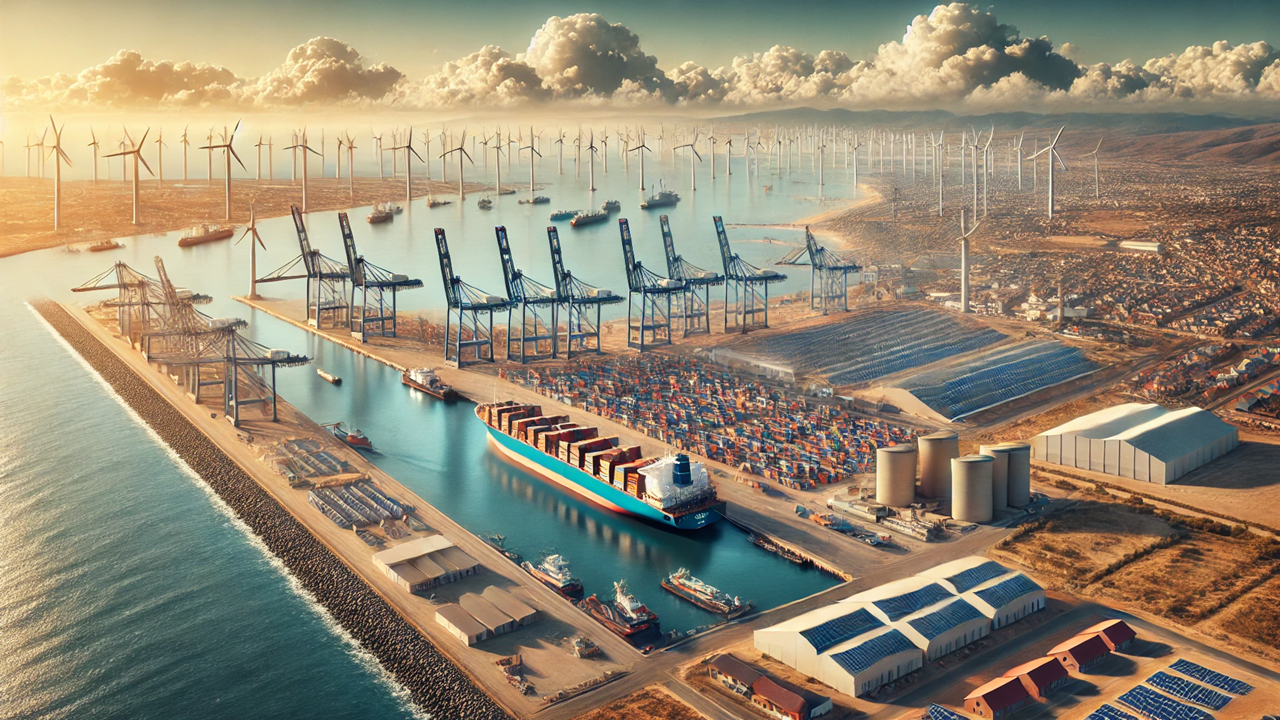South Africa Sets Sail to Become a Green Hydrogen Powerhouse
The World Bank report Creating a Green Marine Fuel Market in South Africa illustrates South Africa’s potential to become a leader in the global green hydrogen economy. With its favorable geographic location and renewable energy resources, the country could produce and export vast amounts of green hydrogen, contributing significantly to global decarbonization efforts. Key projects, such as green ammonia production in Saldanha Bay, demonstrate the potential for South Africa’s ports to become green energy hubs. However, challenges such as the ongoing electricity crisis and the need for port infrastructure upgrades must be addressed to fully realize this vision.

South Africa is setting ambitious targets in its journey towards a greener, more sustainable future, with the potential to play a pivotal role in the global green hydrogen economy. A recent report by the World Bank, titled Creating a Green Marine Fuel Market in South Africa, highlights the country’s emerging leadership in the production of green marine fuels like green hydrogen, ammonia, and methanol. This effort could have a profound impact on both the local economy and global decarbonization efforts, especially in the maritime transport sector.
Hydrogen as a Lifeline for Economic Growth
Green hydrogen is quickly becoming a cornerstone in South Africa’s long-term economic strategy. With its abundant renewable energy resources, the country is well-positioned to lead the production of green hydrogen, a key energy carrier for industries seeking carbon reduction. The World Bank report estimates that South Africa’s hydrogen economy could contribute 3.6% to the nation’s GDP and create 380,000 jobs by 2050.
The driving force behind this development is not only the country’s ambition to reduce its carbon footprint but also its geographical advantage. South Africa’s strategic location along key shipping routes and its large deep-water ports make it a natural candidate for producing and exporting green hydrogen-based marine fuels. Ships visiting South Africa’s commercial ports could require around 56,000 tons of hydrogen as early as 2030, with demand potentially soaring to 530,000 tons by 2050. Ships passing by the Cape of Good Hope represent another massive opportunity, adding an estimated 2 million tons of hydrogen demand by mid-century.
Saldanha Bay: A Catalyst for Green Shipping
One of the key elements in this green transition is the development of green ammonia production at Saldanha Bay, South Africa’s largest natural deep-water port. The World Bank's pre-feasibility study highlights how the port is ideally located to support large-scale green hydrogen production. The Saldanha Bay project could produce approximately 50,000 tons of green hydrogen annually, which would then be converted into 280,000 tons of green ammonia. The projected investment for this endeavor stands at around $2 billion.
Saldanha Bay’s role in the green hydrogen ecosystem could be transformative, not just for South Africa but for global shipping. Bulk carriers, which dominate the port’s traffic, would be key consumers of green marine fuels, allowing South Africa to serve as a bunkering hub for ships traveling through the southern Atlantic and Indian Oceans. Furthermore, the production facility could serve other industrial sectors, such as steel production, helping to further reduce carbon emissions across various industries.
Overcoming Challenges on the Road to a Green Future
Despite its clear advantages, South Africa’s path to becoming a green hydrogen powerhouse is not without challenges. The country’s electricity crisis poses a significant hurdle. Green hydrogen production requires vast amounts of renewable energy, and South Africa’s current energy grid is under severe strain. Load shedding and aging coal-fired power plants have created energy shortages that could hinder the growth of green hydrogen projects.
However, the report is optimistic about overcoming these issues. South Africa is in the process of expanding its renewable energy capacity, and green hydrogen could play a key role in stabilizing the electricity grid by adding excess capacity. The key to success will be strategic investments in new transmission infrastructure and regulatory reforms that encourage private-sector involvement.
In addition, operational inefficiencies in South Africa’s port infrastructure present another challenge. For green hydrogen to reach its full potential, the country’s commercial ports will need to modernize and adapt to the demands of handling new fuel types and increased maritime traffic. The World Bank recommends that port authorities invest in common-user infrastructure, which can serve multiple stakeholders and reduce the costs of transitioning to green energy.
Green Hydrogen’s Role in the Global Market
The World Bank’s report paints a promising picture of South Africa’s future role in the global hydrogen market. The maritime sector is one of the largest contributors to global greenhouse gas emissions, and green hydrogen-based fuels like ammonia and methanol are seen as key solutions to decarbonizing international shipping.
South Africa’s ability to produce and export these fuels could significantly reduce the shipping industry’s carbon footprint, while also positioning the country as a key player in the global green energy transition. The successful implementation of green hydrogen projects in ports like Saldanha Bay could serve as a blueprint for other developing nations looking to leverage renewable energy for economic growth.
- FIRST PUBLISHED IN:
- Devdiscourse
ALSO READ
Unlocking Climate Finance: The World Bank’s Blueprint for Carbon Market Resilience
World Bank Report Urges Armenia to Prioritize Climate Action for Energy Security
Tunisia's Economic Growth Remains Slow in 2024 Despite Promising Indicators, Reports World Bank
Advancing Gender Equality Through Social Protection: World Bank's New Strategy
Global Trade Revolutionized: World Bank’s Take on Digital Port Systems









